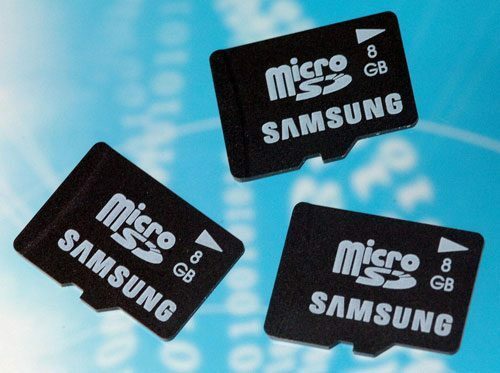Definition of Storage Measures
Miscellanea / / November 13, 2021
By Guillem Alsina González, in Jan. 2009
 They are those units of measurement that allow to determine how much space is available in a memory unit.
They are those units of measurement that allow to determine how much space is available in a memory unit.
It is called a measure of storage to record the space on a given device to record data and information permanently or temporarily.
It can also be understood as a practice that is carried out with the interest of optimizing performance and taking advantage of all the space that exists within a unit.
On computing, there are different storage devices that facilitate the conservation of information, either inside the computer or outside, like a portable memory. The devices can be either a memory or HDD, a disk or CD - ROM, a flash or portable memory, a DVD and several others. In these the information can be stored temporarily or temporarily or permanently.
When they talk to us about "mega", "gigas" and "teras", many times we lose our bearings on whether they are talking about a large or small storage space. To clarify, here is a guide on how to understand storage measurements on hard drives, USB sticks and other computer media.
The most basic unit is the bit, which corresponds to a single unit of information that can present only one of two possible states, 0/1 (or yes / no, black / white, ...).
We will seldom refer to bits when we talk about storage, and if they indicate that the system is 32 or 64 bits, they are not referring to anything that refers to storage, but to the word width of the bus.
The next storage unit is the byte, consisting of eight bits.
Bytes will not be mentioned when we talk about storage units, as it is a very small unit, and it is used to store a letter, number or symbol.
It is obvious that any computer system will need to store more than a few simple characters, so we move on to larger storage units.
A Kilobyte (abbreviated as KB) is a set of 1024 bytes, although it is also simplified in common language as referring to 1,000 bytes.
Since the beginning of microcomputing (watch out! not of computing, but of micro computers), the KB has been the unit that has been talked about most frequently. However, it should be noted that many of the first microcomputers did not have storage units by default, they had to be installed externally afterwards.
The first floppy drives had between 100 and 400 KB of capacity per disk, even reaching over 700KB before moving on to the higher storage unit, which I'll talk a bit more about go ahead.
The RAM it is also measured by the same parameters, since it uses bits to temporarily store information. For example, the first microcomputers integrated 1 KB of RAM, like the Sinclair ZX81, or a few more, like the 4 KB of the 1976 Apple I (yes, before the Sinclair model).
The megabyte (MB) consists of a set of 1024 KB or, for simplicity, we round it up to 1,000 KB.
The first hard drives, large-capacity storage units, ranged from one to ten megabytes at most.
To give you an idea, the first hard drive that I mounted in my first PC had 20 MB of capacity, much less than what a pendrive USB of the smallest.
Also, and "affectionately", the Megabyte is called "mega".
With the Gigabyte (GB), the computational way is repeated: 1 GB is 1024 MB (1,000 for short)
Like the "mega", the Gigabyte is known in family as “giga”, and it is a measure that we have much more in our mouths because, currently, most of the microcomputer systems measure their amounts of RAM and their storage devices in "Gigas".
For example, if we have to buy a computer new, we can value acquiring it with 2, 4, 8 or 16 GB of RAM, and with a disk that goes from 500 GB upwards.
The unit that passes the Gigabyte is the Terabyte (TB). And, as we could already imagine, 1 TB equals 1024 GB (yes, for simplicity, we will refer to 1,000 GB).
At the moment, we are talking about Terabytes for the most powerful hard drives and storage units, as well as for the information downloaded and exchanged in networks of all kinds, Internet of course.
From here on, the names of the following storage measures are already less heard, since their size is such that, until now, they are only used in more technical conversations such as, for example, the aforementioned to the Big data, so I'll simplify them with a scheme:
1 Petabyte (PB) = 1024 Terabytes
1 Exabyte (EB) = 1024 Petabytes
1 Zettabyte (ZB) = 1024 Exabytes
1 Yottabyte (YB) = 1024 Zettabytes
What, logically, comes from here exceeding the Yottabyte, has not yet been standardized, that is, there is no universally accepted nomenclature to refer to such a volume of data.
This is so because, simply, it has not yet been necessary to name the units that come beyond the Yottabyte. Simply, humanity has not generated enough information to handle these figures.
Topics in Storage Measures


